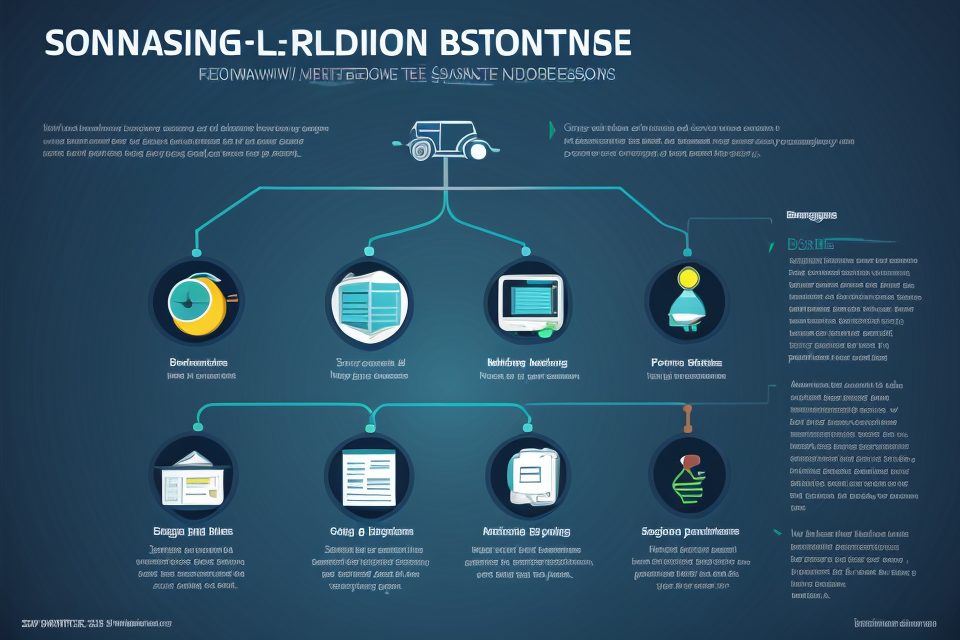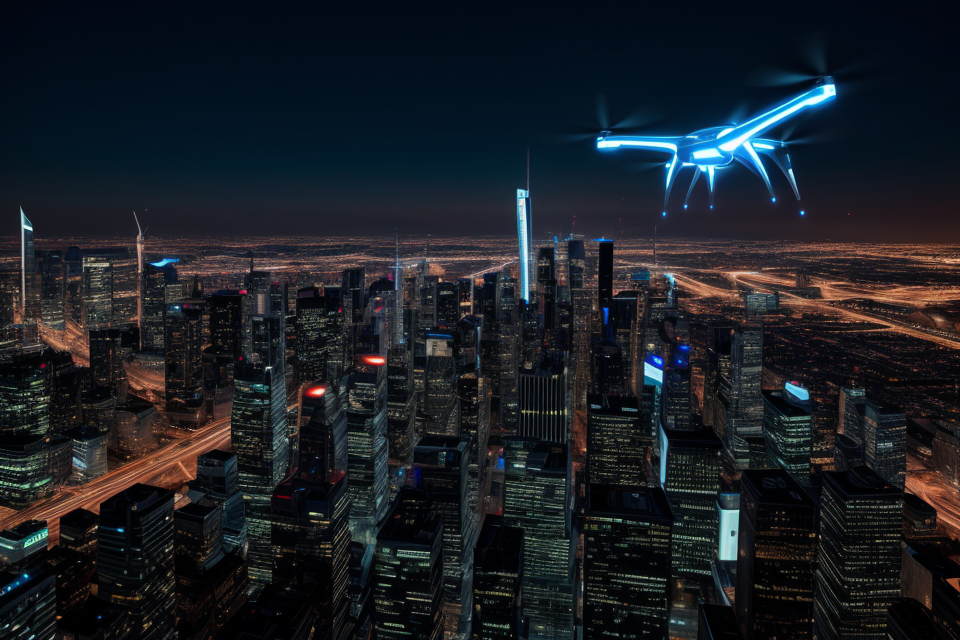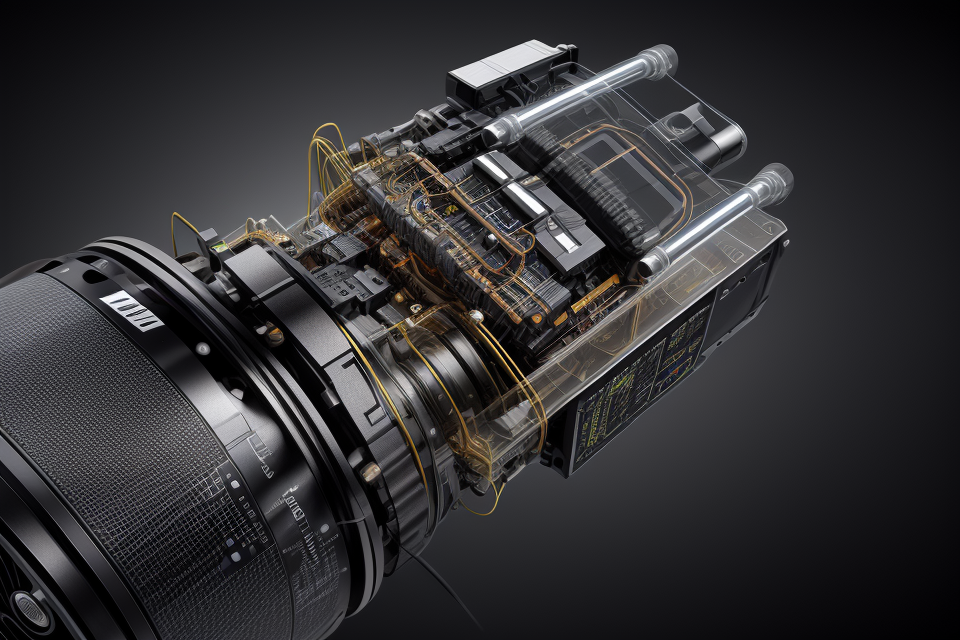
The world of technology is constantly evolving, and sensor technology is no exception. Sensors are everywhere, from smartphones to self-driving cars, and they play a crucial role in our daily lives. So, what are the latest trends in sensor technology? In this article, we will explore some of the most exciting developments in this field, including advancements in artificial intelligence, the Internet of Things, and more. Whether you’re a tech enthusiast or just curious about the latest innovations, read on to discover the cutting-edge trends in sensor technology.
The latest trends in sensor technology include the development of more advanced and sophisticated sensors that can be integrated into a wide range of applications and devices. These sensors are designed to be smaller, more energy-efficient, and more accurate than previous generations, and they are capable of collecting and processing large amounts of data in real-time. Additionally, there is a growing trend towards the use of artificial intelligence and machine learning algorithms to analyze the data collected by sensors, allowing for more advanced and accurate decision-making. Another trend is the integration of sensors with the Internet of Things (IoT), enabling the collection and analysis of data from a wide range of sources, including devices, machines, and even entire cities. Overall, the latest trends in sensor technology are focused on improving the accuracy, efficiency, and effectiveness of sensor-based systems, and on enabling new and innovative applications and use cases.
Advances in sensor technology
Increased accuracy and precision
- Advancements in sensor design and materials
- Improved data processing algorithms
- Integration of multiple sensors
The demand for higher accuracy and precision in sensor technology has led to significant advancements in the field. These improvements can be attributed to various factors, including the development of new materials, the refinement of data processing algorithms, and the integration of multiple sensors.
One key factor contributing to increased accuracy and precision is the development of new materials for sensor construction. For example, researchers are exploring the use of graphene, a single layer of carbon atoms arranged in a hexagonal lattice, as a material for sensors. Graphene’s unique properties, such as high electrical conductivity and mechanical strength, make it an attractive option for improving sensor performance.
In addition to material advancements, improvements in data processing algorithms have also played a critical role in enhancing the accuracy and precision of sensors. Machine learning techniques, such as neural networks, can be employed to analyze sensor data and extract valuable information. By using these algorithms, sensor systems can become more intelligent and accurate in their measurements.
Furthermore, the integration of multiple sensors has enabled more comprehensive and precise data collection. By combining data from various sensors, such as temperature, pressure, and humidity sensors, a more complete picture of the environment can be obtained. This integration allows for better monitoring and control of complex systems, leading to increased accuracy and precision in sensor readings.
In conclusion, the latest trends in sensor technology have focused on achieving higher accuracy and precision. This has been facilitated by advancements in sensor design and materials, the improvement of data processing algorithms, and the integration of multiple sensors. These developments have significant implications for various industries, including healthcare, agriculture, and manufacturing, and will continue to drive the evolution of sensor technology in the future.
Greater miniaturization
The development of micro and nano sensors has been a significant trend in recent years. These sensors are much smaller in size compared to traditional sensors, allowing for greater miniaturization of electronic devices. This has opened up new possibilities for integration with wearable and IoT devices, where space is at a premium.
One area where miniaturization has had a particularly significant impact is in medical and biological research. The ability to incorporate sensors into implantable medical devices, such as pacemakers and cochlear implants, has improved the performance and reliability of these devices. In addition, the development of biosensors that can detect specific biomarkers has enabled more accurate and timely diagnosis of diseases, leading to better patient outcomes.
Moreover, the miniaturization of sensors has facilitated the development of point-of-care diagnostic devices that can provide rapid and accurate test results without the need for expensive laboratory equipment. This has the potential to revolutionize healthcare by making diagnostic testing more accessible and affordable, particularly in remote or underserved areas.
Another area where miniaturization is making a significant impact is in environmental monitoring. The development of miniature sensors that can detect changes in temperature, humidity, and air quality has enabled more comprehensive and accurate monitoring of the environment. This has important implications for climate change research, as well as for the development of smart cities that can respond in real-time to changes in environmental conditions.
Overall, the trend towards greater miniaturization of sensors is set to continue, with new applications and opportunities emerging as technology advances.
Expansion to new domains
Sensor technology has expanded to new domains in recent years, enabling the development of sensors for various applications. Some of the domains where sensors are being used include:
Sensors for environmental monitoring
Environmental monitoring sensors are used to collect data on various environmental parameters such as temperature, humidity, air quality, and soil moisture. These sensors are essential for understanding and predicting environmental conditions, which can help in managing natural resources and mitigating the impact of climate change. For example, temperature sensors are used to monitor weather conditions, while air quality sensors are used to measure pollutants in the air.
Sensors for hazardous and extreme environments
Sensors for hazardous and extreme environments are designed to operate in harsh conditions such as high temperatures, high pressure, and corrosive environments. These sensors are used in various industries such as oil and gas, mining, and aerospace. For instance, sensors are used to monitor the temperature and pressure of pipelines in the oil and gas industry, while sensors are used to measure the structural integrity of aircraft in the aerospace industry.
Sensors for emerging industries such as autonomous vehicles and smart cities
Sensors are playing a critical role in the development of emerging industries such as autonomous vehicles and smart cities. In the case of autonomous vehicles, sensors such as lidar, radar, and cameras are used to gather data on the vehicle’s surroundings, which is essential for decision-making and navigation. In the case of smart cities, sensors are used to collect data on various parameters such as traffic flow, air quality, and energy consumption, which can be used to optimize city operations and improve the quality of life for citizens.
Emerging applications of sensor technology
Healthcare and medicine
Sensor technology has seen a significant rise in the healthcare and medical industry, enabling new ways to monitor, diagnose, and treat patients. Here are some of the emerging applications of sensor technology in healthcare and medicine:
Wearable sensors for patient monitoring
Wearable sensors are becoming increasingly popular for patient monitoring in healthcare. These sensors are designed to be worn by patients for a specific period, collecting vital health data such as heart rate, blood pressure, and oxygen saturation levels. The data collected by these sensors can be transmitted to healthcare professionals in real-time, allowing for timely interventions and better patient care. Wearable sensors are also useful for monitoring patients with chronic conditions, enabling them to manage their conditions more effectively.
Diagnostic sensors for disease detection and management
Diagnostic sensors are another emerging technology in healthcare, enabling the early detection and management of diseases. These sensors use various techniques, such as optical sensing, electrical sensing, and biochemical sensing, to detect biomarkers associated with specific diseases. For example, optical sensors can detect changes in the color and texture of skin to diagnose skin cancer, while electrical sensors can detect changes in the electrical activity of the heart to diagnose heart conditions. Biochemical sensors can detect changes in biomarkers such as glucose levels to diagnose diabetes.
Sensors for personalized medicine and drug delivery
Sensor technology is also being used to develop personalized medicine and drug delivery systems. These sensors can monitor patients’ responses to drugs, allowing healthcare professionals to adjust dosages and treatment plans accordingly. For example, sensors can be used to monitor patients’ blood sugar levels to adjust insulin dosages for diabetes treatment. Sensor technology is also being used to develop drug delivery systems that release medication based on biomarker detection, providing more targeted and effective treatment.
Overall, sensor technology is transforming healthcare and medicine, enabling new ways to monitor, diagnose, and treat patients. These emerging applications of sensor technology have the potential to improve patient outcomes and reduce healthcare costs.
Industrial and manufacturing
Sensor technology has found a wide range of applications in the industrial and manufacturing sectors. The increasing demand for smart factories and the need for efficient and automated processes have led to the development of advanced sensors that can perform various tasks. Here are some of the latest trends in sensor technology for industrial and manufacturing applications:
Sensors for quality control and process optimization
Quality control is a critical aspect of manufacturing processes, and sensors play a vital role in ensuring that products meet the required standards. The latest sensors are capable of detecting even the slightest variations in product quality, which enables manufacturers to optimize their processes and reduce waste. These sensors can be used to monitor the quality of materials, detect defects, and ensure that products meet the required specifications.
Sensors for predictive maintenance and condition monitoring
Predictive maintenance is an essential aspect of industrial and manufacturing processes, as it helps to prevent equipment failures and minimize downtime. The latest sensors are capable of monitoring the condition of equipment and predicting when maintenance is required. This helps manufacturers to plan maintenance activities and reduce the risk of unexpected failures. Sensors can be used to monitor temperature, pressure, vibration, and other parameters to detect signs of wear and tear.
Sensors for automation and robotics
Automation and robotics are becoming increasingly important in manufacturing processes, and sensors play a crucial role in enabling these technologies. The latest sensors are capable of detecting the position, orientation, and movement of robots and other automated systems. This enables manufacturers to automate repetitive tasks and improve the efficiency of their processes. Sensors can also be used to monitor the performance of robots and detect any malfunctions or errors.
Overall, the latest trends in sensor technology for industrial and manufacturing applications are focused on improving efficiency, reducing waste, and enabling automation. These sensors are becoming increasingly sophisticated and are capable of performing a wide range of tasks, from quality control to predictive maintenance and automation. As the demand for smart factories and efficient manufacturing processes continues to grow, it is likely that sensor technology will play an increasingly important role in these industries.
Consumer electronics and IoT
Sensors for gesture recognition and user interface
One of the latest trends in sensor technology is the integration of gesture recognition and user interface sensors in consumer electronics. These sensors allow for a more intuitive and interactive user experience, enabling users to control their devices with simple hand gestures or movements. This technology is particularly popular in the gaming industry, where it allows for more immersive and engaging gameplay. Additionally, gesture recognition sensors are also being used in smart home devices, such as remote controls and smart speakers, to make it easier for users to navigate and control their homes.
Sensors for smart home and building automation
Another area where sensor technology is seeing significant growth is in smart home and building automation. Sensors are being used to automate and control various aspects of the home or building, such as lighting, heating, and security. For example, occupancy sensors can detect when a room is occupied and adjust the lighting and temperature accordingly. Similarly, motion sensors can detect when someone is approaching a door or window and automatically unlock it. These sensors can be integrated with other smart home devices, such as thermostats and security systems, to create a more connected and efficient living environment.
Sensors for environmental and air quality monitoring
In addition to smart home and building automation, sensor technology is also being used for environmental and air quality monitoring. These sensors can detect various environmental factors, such as temperature, humidity, and air quality, and provide real-time data to help users make informed decisions about their surroundings. For example, air quality sensors can detect the presence of pollutants and allergens in the air, allowing users to take appropriate measures to protect their health. Similarly, temperature and humidity sensors can help users optimize their home or building’s energy usage by detecting when windows or doors are open or when the HVAC system needs to be adjusted.
Technological challenges and opportunities
Integration and interoperability
As sensor technology continues to advance, the ability to integrate and interoperate with other devices and systems is becoming increasingly important. The following are some of the key trends in this area:
- Standardization of sensor interfaces and protocols: The lack of standardization in sensor interfaces and protocols has been a major barrier to widespread adoption of sensor technology. However, there are now several initiatives underway to address this issue. For example, the IEEE P2413 working group is developing a standard for the interface between sensors and the cloud, while the Open Connectivity Foundation is working on a standard for IoT device connectivity.
- Integration of sensors with other devices and systems: As sensor technology becomes more widespread, there is a growing need to integrate sensors with other devices and systems. This requires the development of APIs and other tools that allow sensors to communicate with other devices and systems in a seamless and intuitive way. For example, the Sensor Open System Architecture (SOSA) is a standard that aims to provide a common interface for sensors across different domains and applications.
- Ensuring data security and privacy: As sensor technology becomes more widespread, there is a growing concern about the security and privacy of the data that is collected by sensors. This requires the development of new technologies and protocols that can ensure that sensor data is protected from unauthorized access and misuse. For example, the Confidentiality, Integrity, and Availability (CIA) triad is a widely used framework for ensuring data security, while the General Data Protection Regulation (GDPR) is a regulation that sets out strict rules for the collection and use of personal data.
Sustainability and ethical considerations
Energy efficiency and sustainability of sensor technology
As the world grapples with the challenge of climate change, the development of energy-efficient and sustainable sensor technology has become a pressing concern. The increasing demand for sensors in various industries, such as transportation, healthcare, and agriculture, has led to a surge in energy consumption, which in turn contributes to greenhouse gas emissions. Therefore, researchers and industry professionals are working on developing sensors that consume minimal energy while maintaining high accuracy and performance. Some of the energy-efficient sensor technologies that are gaining traction include:
- Low-power microelectronics: The use of low-power microelectronics in sensor design has significantly reduced energy consumption. These microelectronics use innovative materials and manufacturing techniques to minimize power consumption while maintaining high accuracy.
- Energy harvesting: Energy harvesting sensors use ambient energy sources, such as solar, thermal, or kinetic energy, to power themselves. This technology has the potential to reduce the reliance on batteries and minimize waste associated with battery disposal.
- Machine learning-based energy optimization: Machine learning algorithms can optimize sensor data collection and processing, reducing the amount of energy required for data analysis. This approach can lead to more efficient sensor networks and reduced energy consumption.
Addressing environmental impact of sensor production and disposal
The rapid growth in the use of sensors has led to an increase in the production of electronic waste, which poses significant environmental challenges. The disposal of electronic waste often leads to the release of hazardous substances into the soil, water, and air, causing significant environmental damage. Therefore, it is essential to address the environmental impact of sensor production and disposal. Some of the strategies being employed to mitigate this issue include:
- Design for sustainability: Sensor manufacturers are increasingly adopting design principles that prioritize sustainability. This includes the use of eco-friendly materials, modular designs that enable easy repair and upgrading, and the integration of recycled materials in the production process.
- Extended producer responsibility: Governments and industry associations are promoting extended producer responsibility (EPR) programs, which hold manufacturers responsible for the entire life cycle of their products, including disposal. EPR programs encourage manufacturers to invest in sustainable practices and ensure proper disposal of electronic waste.
- Circular economy principles: The circular economy approach involves designing products with the intention of minimizing waste and promoting resource efficiency. In the context of sensor technology, this includes developing sensors that can be easily repaired, refurbished, or recycled, reducing the need for new sensor production and minimizing electronic waste.
Ethical considerations in sensor data collection and use
As sensors become more prevalent, ethical concerns surrounding data collection and use have emerged. Sensor data can be used to monitor and track individuals, potentially infringing on privacy rights. Additionally, the use of sensor data may perpetuate biases and discrimination, particularly in areas such as facial recognition and predictive policing. Therefore, it is crucial to address ethical considerations in sensor data collection and use. Some of the ethical concerns and their potential solutions include:
- Transparency and informed consent: Sensor data collection should be transparent, and individuals should be informed about the data being collected and how it will be used. Obtaining informed consent from individuals before data collection can help ensure that privacy rights are respected.
- Data minimization and purpose limitation: Sensor data collection should be limited to the minimum necessary to achieve the intended purpose. This can help prevent the accumulation of unnecessary data and reduce the potential for privacy violations.
- Privacy-preserving technologies: Technologies such as differential privacy and federated learning can help protect individual privacy by limiting the amount of data shared and ensuring that sensitive information is not exposed.
- Equitable and unbiased algorithms: Sensor data analysis should be based on equitable and unbiased algorithms to prevent perpetuation of biases and discrimination. This may involve
Future outlook for sensor technology
Continued innovation and growth
Advancements in materials science and nanotechnology
The ongoing advancements in materials science and nanotechnology have enabled the development of novel sensor materials with enhanced properties. For example, researchers have developed sensors based on carbon nanotubes, graphene, and other nanomaterials that exhibit superior sensitivity, selectivity, and stability compared to traditional sensor materials. These cutting-edge materials have the potential to revolutionize sensor technology, enabling the creation of more reliable, accurate, and cost-effective sensors for a wide range of applications.
Expansion into new application domains
Sensor technology is rapidly expanding into new application domains, including healthcare, environmental monitoring, and industrial automation. For instance, wearable sensors are being developed to monitor vital signs, track physical activity, and assess sleep quality, which can help improve patient care and personal wellness. In environmental monitoring, sensors are being deployed to measure air quality, water quality, and soil moisture, which can inform environmental policy and promote sustainable practices. Additionally, sensor technology is being integrated into smart cities and the Internet of Things (IoT) to enhance urban efficiency, safety, and livability.
Growing demand for sensor technology in emerging industries
The growing demand for sensor technology in emerging industries, such as autonomous vehicles, robotics, and artificial intelligence (AI), is driving innovation and growth in the sensor market. For example, advanced sensor systems are being developed for autonomous vehicles to enable accurate positioning, obstacle detection, and environmental monitoring. In robotics, sensors are being used to enhance robot perception, locomotion, and decision-making capabilities. Furthermore, AI algorithms are being combined with sensor data to create intelligent systems that can learn, adapt, and make predictions based on sensor inputs. These emerging applications are pushing the boundaries of sensor technology, driving the development of more sophisticated and capable sensors.
Opportunities for collaboration and partnerships
Collaboration between industry, academia, and government for research and development
The convergence of technology, data, and analytics is driving the need for increased investment in sensor technology research and development. In response, there is a growing trend towards collaboration between industry, academia, and government. This collaboration brings together the resources, expertise, and knowledge of each sector to accelerate the development of new sensor technologies and applications. For example, industry can provide funding and access to markets, academia can provide research and development expertise, and government can provide regulatory support and funding for research.
Partnerships between sensor manufacturers and end-users for customized solutions
As sensor technology continues to advance, there is a growing demand for customized solutions that meet the specific needs of end-users. To meet this demand, sensor manufacturers are forming partnerships with end-users to better understand their requirements and develop tailored solutions. These partnerships enable manufacturers to gain valuable insights into the needs of their customers and develop products that are better suited to their needs. Additionally, end-users benefit from access to cutting-edge technology and expertise, which can help them stay ahead of the competition.
Open innovation and crowdsourcing models for sensor technology development
Open innovation and crowdsourcing models are becoming increasingly popular in sensor technology development. These models enable companies to tap into the collective knowledge and expertise of a wider community, including researchers, engineers, and end-users. By leveraging the power of crowdsourcing, companies can accelerate the development of new sensor technologies and applications, reduce costs, and increase the accuracy and reliability of their products. For example, companies can use crowdsourcing to gather data on the performance of their sensors in real-world environments, which can help them improve their products and better meet the needs of their customers.
FAQs
1. What are the latest trends in sensor technology?
The latest trends in sensor technology include the development of more advanced and sophisticated sensors that can collect and analyze data from a wider range of sources. These sensors are becoming increasingly integrated into everyday devices and systems, enabling more efficient and effective monitoring and control of various processes and systems.
2. How are sensors being used in the Internet of Things (IoT)?
Sensors are a critical component of the IoT, as they enable the collection and analysis of data from a wide range of sources. In the IoT, sensors are being used to monitor and control everything from industrial processes to consumer products, and they are helping to drive innovation and efficiency in a wide range of industries.
3. What are some examples of emerging sensor technologies?
Some examples of emerging sensor technologies include wearable sensors, which can monitor and analyze a person’s biometric data, and environmental sensors, which can monitor air quality, temperature, and other environmental factors. Other emerging sensor technologies include chemical sensors, which can detect and analyze various chemical compounds, and biomedical sensors, which can monitor and analyze various biological signals.
4. How are sensors being used in the healthcare industry?
Sensors are being used in the healthcare industry to monitor and analyze various biological signals, such as heart rate, blood pressure, and brain activity. They are also being used to develop new medical devices and treatments, and to improve the accuracy and efficiency of existing medical procedures. Overall, sensors are helping to drive innovation and improve patient outcomes in the healthcare industry.
5. What are some challenges associated with sensor technology?
Some challenges associated with sensor technology include the need for high-quality data and the need for effective data analysis and interpretation. There is also a need for more standardization and interoperability among different sensor technologies, as well as a need for more secure and reliable data transmission and storage methods. Additionally, there is a need for more research and development in order to advance sensor technology and to address emerging challenges and opportunities.


